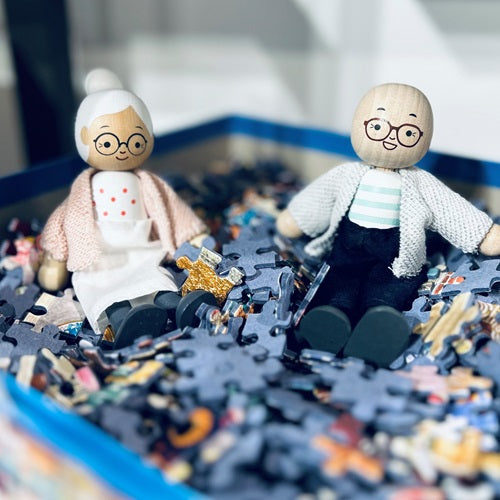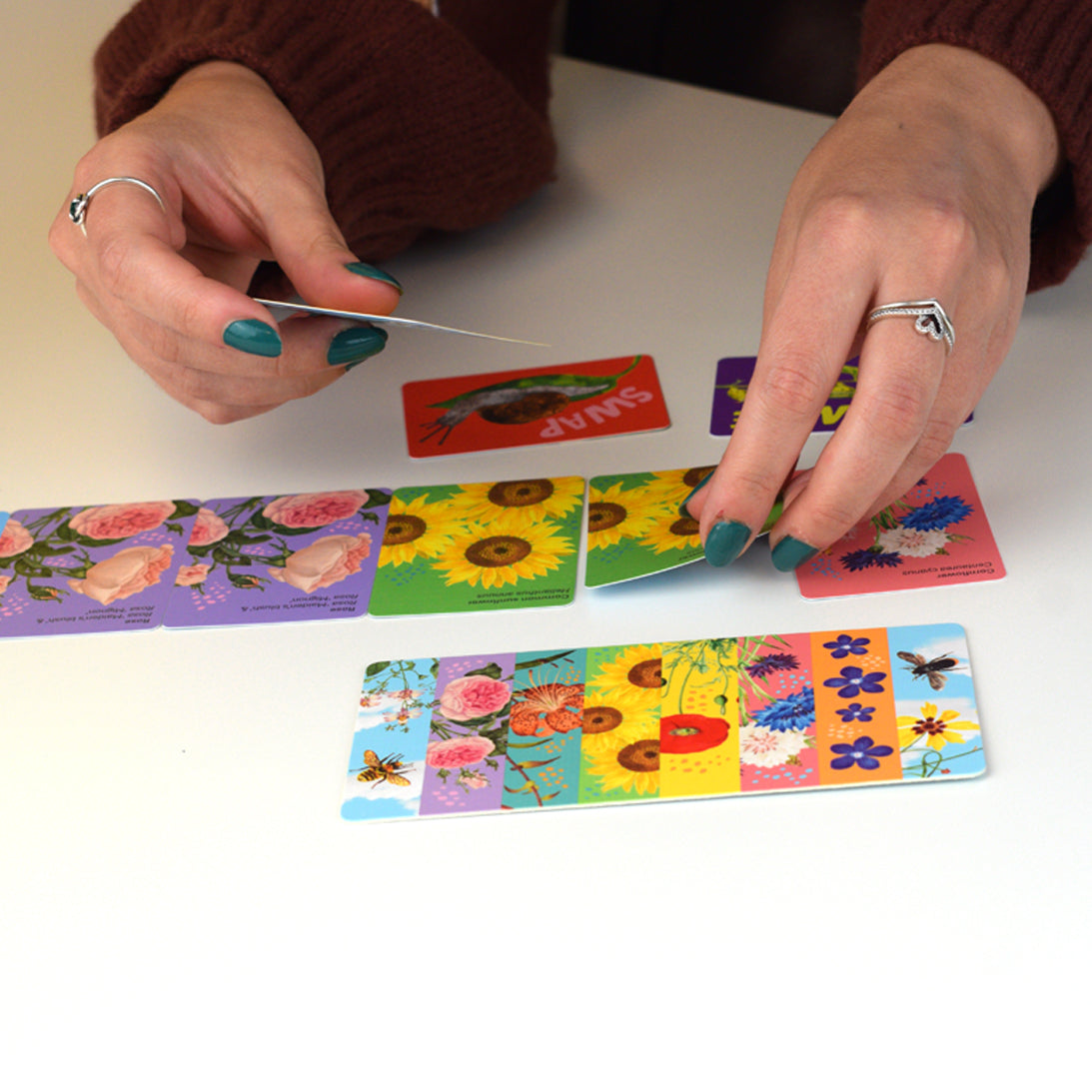![How to perfect a digital detox in 2022 [GUIDE]](http://gibsonsgames.co.uk/cdn/shop/articles/Workshop_Crafting_Bench.jpg?v=1645101253)
When people start to feel overwhelmed, stressed or simply fed up with the endless tweets, hashtags, likes and comments from social media, they tend to take a digital detox. The phrase is fairly self-explanatory - it’s when people voluntarily refrain from using digital devices or services.
Some studies have shown a 50% - 70% increase in internet usage since the start of the pandemic, with 50% of that time being spent on social media in 2020. It’s easy to get lost in the endless scrolling through the ‘For You’ page on TikTok or spending hours watching YouTube videos on DIY crafts and funny cat videos (I’m definitely not calling out my own habits 👀), but what if it is time for a change?
Coming into the new year, most people say ‘New Year, New Me’ and this phrase can put a lot of pressure on people to make a change. But instead of starting big and falling at the first hurdle, start small and work your way up.
If you feel like your 2022 is already passing by, or maybe you want to cut back on the amount of time you spend on your phone (don’t worry - we have all been there), then maybe this is the perfect time for you to do a digital detox. We’ve created this guide to help you on your journey in spending less time online, based on research and our personal experience.
A digital detox doesn’t mean unplugging completely
We should mention that a digital detox doesn’t mean you have to unplug from the internet completely. We understand that everyone has a life and sometimes it is nearly impossible to completely remove yourself from online for a period of time.
You also don’t want to end up developing FOMO (a Fear Of Missing Out) or enhancing this feeling - that is the worst outcome from a digital detox and it means that it definitely didn’t work. You will need to train yourself to not feel the urgency to check notifications and updates constantly. It will be tough to start, but after a couple of days, you will get the hang of it!
Instead, focus on lowering your social media usage and spending less time watching TV or playing online games. This way, you can still be involved with updates from your friends and partaking in activities that you may do on a day-to-day basis. But by lowering your consumption, you will free up your time to focus on other aspects of your life.
7 Tips to Make Digital Detox easier
Starting something new can be difficult, so it is always nice to receive some advice on how to have a successful digital detox. A word of advice: tell your closest friends and family that you are doing a digital detox as it will help them understand why you may be slower to replying to messages or seeing notifications.
Here are 7 tips that can help you to get started on your journey.
1. Mute or turn off notifications

Of course you don’t have to mute all notifications from your messaging apps, we understand that it is important to read messages at times. However, reducing the number of notifications you receive will result in you looking at your phone less often.
2. Designate “Technology-Free” Time
Setting aside periods of time throughout your day to be completely cut off from technology is a great way to break up your day, focusing on a hobby or an activity. This will also help in breaking the cycle of using digital devices and reduce boredom when using technology. You could set this to be for an hour or two during the middle of the day or after you have finished work. You could even assign a day when you are free to be completely cut off from technology (only if you feel like you need it though)!
3. Make your bedroom a “no-tech zone”
Using your phone or tablet, or even watching TV in bed, can attribute to a poor quality of sleep. One study showed that 75% of children and 70% of adults use electronic devices in their bedroom. This can actually delay your sleep as using technology stimulates your brain, which in turn makes it harder for you to fall asleep and relax at night. It can also lead to a restless night sleep if you have sounds or blinking lights that trigger throughout the night from notifications. Try to mute your phone when going to bed and move it to the bottom of the bed, whilst keeping TV and game time limited to outside the bedroom.
4. Delete Unnecessary Apps
Clearing out your phone is almost like clearing out your home from clutter - it helps to free your mind and reduce your stress. Japanese organisation consultant and author Marie Kondo created the KonMari method as a way to effectively declutter and organise your life. This could work for your devices as well, so think to yourself ‘Have I used this app in the last month?’ or ‘Does this app spark joy?’ or ‘Did I download this app and never use it?’. Answering these questions can help to declutter your phone and tablets apps and result in a organised device that makes you feel calmer and more in control of your life.
5. Clean out your Social Media Accounts

Do you find that you follow thousands of people on Instagram and TikTok, or maybe you are friends with people on Facebook who you don’t even know? Perhaps you follow people who are toxic to your self-esteem and beliefs. Doing a deep clean of your social media accounts can help make your return to social media after a digital detox more enjoyable and comfortable, only seeing posts and updates from the people you want to see.
6. Limit yourself to One Screen at a Time
We are all guilty of this - you are watching TV and then you end up looking through social media on your phone, it is an easy distraction. However, this makes it difficult to recalibrate our brains back to the original tasks, which can not only affect your downtime, but also your work and personal life. By limiting yourself to one screen at a time, you are minimising this distraction and improving your levels of concentration, as well as potentially allowing you to find more enjoyment in the task at hand.
7. Only use Technology with a Purpose, Not to Kill Time
A lot of the time when people are bored, they tend to reach for their phone, gaming console or turn on their TV to pass the time. But it’s time to break this cycle, as sometimes you find yourself instinctively turning to your devices even when you are doing something (out of habit). Instead, think of something else to do (keep on reading to find examples of activities that you can get involved in during your free time). By breaking this cycle, you may find yourself interacting with people more in public, making for more engaging conversations, improving your overall concentration levels as well!
9 Activities that can help you achieve a Digital Detox
So now you know how to lower your digital consumption, but now what do you do with all your free time? This is when it is a good time to potentially find a new hobby, re-ignite a love for a previous hobby or maybe enjoy the people and environment around you. With that being said, we decided to put together a list of 9 activities that you could do to help your digital detox.
1. Learn a Creative Craft

It can always be fun to get in touch with your artsy side (you never know - you may be the next Van Gogh 🤭). During the pandemic there was a rise in creative crafters, with people taking up knitting, crocheting and painting to pass the time. Even Tom Daley was seen knitting a cardigan at the 2020 Tokyo Olympics! Taking up creative crafts can help in reducing burnout and stress, as well as making you focus on one task at a time - it makes it almost impossible to look at your phone at the same time, which is handy for a digital detox!
2. Take up Journaling
Journaling can be quite cathartic, allowing you to release your emotions onto a page and figure out how you are feeling. By simply writing about your day or your plans, you start to feel more connected with your thoughts and feelings. It is also a great way to set goals for yourself, whether that is short-term or long-term goals.
3. Create an indoor green space
Whatever your living accommodation is, creating an indoor green space is a great way to lighten your mood and create an aesthetically pleasing environment. For example, buying indoor air purifying plants can help in removing chemicals from the air in your home. Another great addition to any home is a terrarium, which acts as an indoor miniature garden that is self-sustaining and looks adorable. Making terrariums for your home is a great way to pass the time, feel energised and at the end of it, your home will look gorgeous.
4. Re-Decorate a Room
Staying along the lines of home DIY “vibes”, re-decorating a room is a fantastic way to pass the time. Of course, you don’t have to completely renovate a room, but maybe adding new features, furniture or decor could make your home feel more enjoyable to be in. Some ways in which you can decorate a room in your home is to upholster old furniture, create memory boards filled with pictures and life aspirations or frame your jigsaw puzzles and add as decoration to a room. Looking in charity shops for furniture and decor is a sustainable way to find new items to reuse in your home as well.
5. Try a DIY Craft

As mentioned further up, many of us experience the endless scrolling through TikTok’s ‘For You’ page, but sometimes you come across hidden gems. One of them is the inspiration for DIY crafts that you could do in your spare time. These types of crafts can be simple decoration or maybe they have a purpose.
Some examples that we have seen are glass etching, painting candles and embroidering clothes. Finding these types of TikTok guides and YouTube channels focused around DIY crafts can spark inspiration to try something new. Maybe when you are next on TikTok or YouTube, try searching for #DIY, #crafts or DIY crafts. Even though some of this will require technology, in the grand scheme of things, it is purely for research purposes - so remember that when on the hunt for your next DIY craft!
Here are some points of reference to get you started:
- TikTok: @PrintsByGG - Candle painting
- TikTok: @kimigami - Origami Succulent Basket
- YouTube: JenerationDIY - DIY video playlist
- YouTube: AmandaRachLee - DIY video playlist
6. Sporting Activities & Sight-Seeing
We can hear the collective sighs already, but going for walks in your area and discovering new places can be great both mentally and physically. Having a breath of fresh air and taking in the scenery can help in making you feel more relaxed and lighten your overall mood. But if you want to take it a step further, finding a new sport can be a great new hobby and a good way to find new friends.
7. Volunteering
One way in which you can help yourself and give back to your community is through volunteering. Whether it is litter picking, working in a charity shop one day a week or helping with a wellbeing phone service for the elderly, there are a lot of great opportunities that you can find in your area. Not only are you giving something back to the community, but you can also make new friends and have the opportunity to develop new skills or build on existing experiences and knowledge.
8. Gibsons Games - Jigsaw Puzzles, Board Games and Playing Cards
Not to toot our own horns, but we definitely are going to 😏. As we have said in our brain workout blog, jigsaw puzzles are a great way to improve mental and memory speed, as well as lower stress levels and improve your mental wellbeing. The same applies to board games and playing cards as well, providing a great way to relax and enjoy your free time. It can also be a fun way to connect with your friends and family, which can lead to regular game nights. Our game ‘Out of Order’ is a great way to disconnect from social media for hours of fun.
9. Ideas Everyone Suggests BUT They Work

If you research on the internet, you will see these ideas come up time and time again. These are: reading, cooking, baking and colouring books. All of these can be relaxing in some way, as well as helping to improve your knowledge, expertise and skills - even if you already do some of these. Completing these tasks can help in releasing dopamine, making you feel more satisfied and productive. What’s more, these hobbies and interests are a great way to disconnect from technology.
Take the Plunge with a Digital Detox
Typically, people say that a digital detox should only last a couple of days. However, we feel like this is something that should be determined yourself. If you want to take a week, then take a week. You can set how long you want to do your digital detox for - what we would advise is that you try to stay on course for the duration of time that you set out. But if you feel better after a couple of days, then it’s been a successful detox - and you can always do another digital detox in the future if needed.
There you have it! That’s our guide on how to perfect your digital detox in 2022. We hope you have found new ways to unplug from technology. Now we are off to wind down and relax with some of our favourite jigsaw puzzles 😉.




0 comments